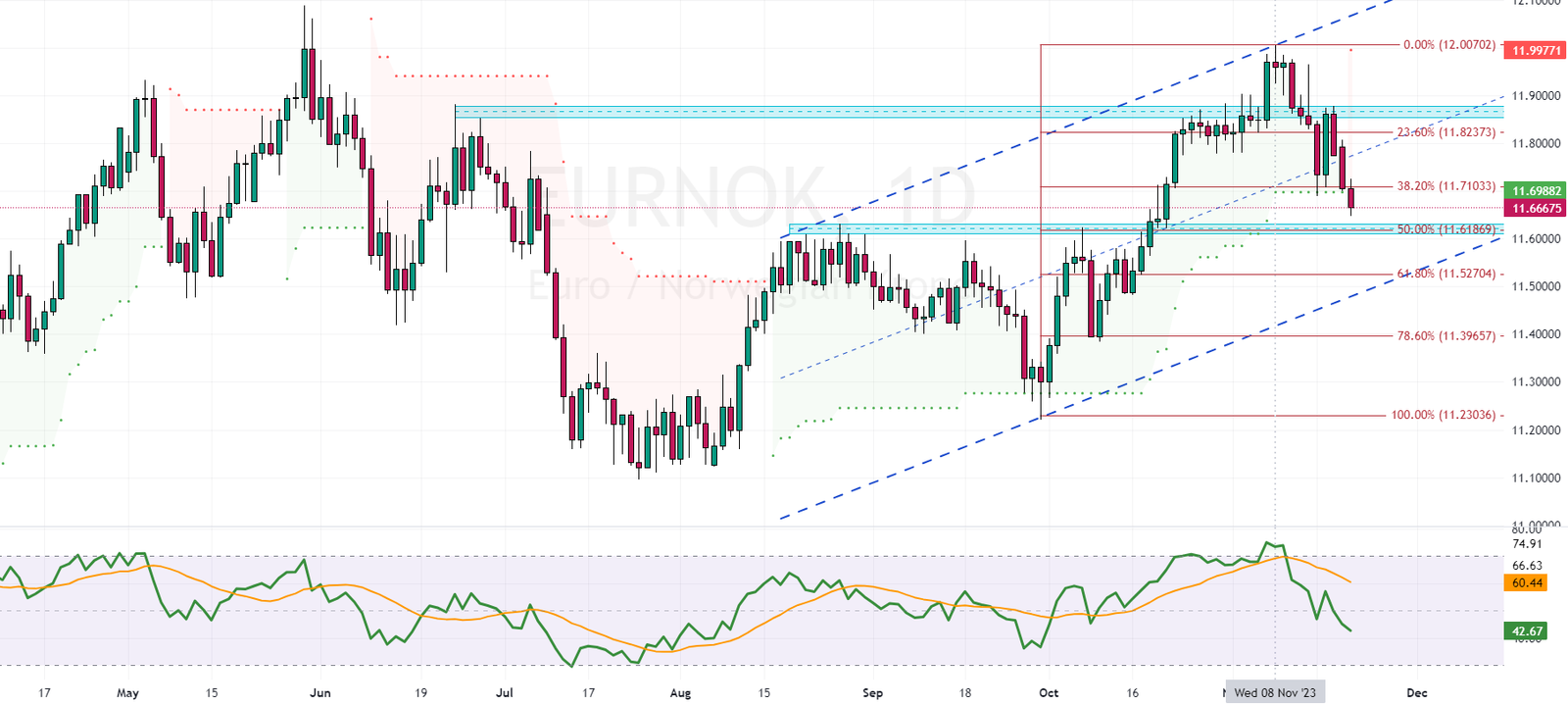FxNews – Today’s EURHKD forecast indicates a shift in market dynamics, as seen in the EURHKD currency pair, which is undergoing a downward correction.
EURHKD Forecast – Bearish Correction
This trend was observed after the pair rose to the upper line of the bullish flag, coinciding with the RSI indicator lingering in the overbought area. Notably, a bearish engulfing candlestick pattern emerged on the 4-hour chart for EUR/HKD.

The immediate target for the pair appears to be the 23.6% Fibonacci retracement level, with the subsequent aim set at the 50% level. A critical juncture for this currency pair is the potential to reach the lower band of the bullish flag, which would require a closing price below 8.46, representing the 38.2% Fibonacci level.
This week’s high of 8.5432 adds to the complexity of the scenario, lending credence to the bearish correction hypothesis. However, breaching this level could signal a continuation of upward momentum. This situation intrigues those closely following the EURNOK forecast, as it offers insights into broader market movements and tendencies.
EURHKD Fundamental Analysis
Reuters–In November 2023, Hungary’s central bank made a significant decision regarding its interest rates. The bank decreased its main interest rate, the base rate, to 11.5%. This was a reduction of 0.75%, a move expected by those who keep an eye on the market. The central bank’s decision came at a time when there was a lot of discussion about how to help Hungary’s economy grow. Some people in the government wanted bigger cuts to the interest rates, but the central bank chose a more cautious approach.
Along with the base rate, the bank lowered the rates for specific financial activities. The rate for loans backed by collateral and the rate for overnight deposits dropped by the same amount as the base rate, settling at 12.5% and 10.5%, respectively. These changes are part of the bank’s strategy to manage the economy.
The Current Economic Landscape
We must look at Hungary’s recent economic situation to understand why these changes are important. In October 2023, the cost of goods and services, measured by consumer prices, increased by 9.9% compared to the previous year. This rate of increase was the lowest since April 2022 but still quite high compared to what the central bank aims for. The bank usually tries to keep this rate around 3%.
The central bank believes that inflation will gradually go down. They expect it to be around 7% by the end of 2023 and to reach a more manageable level by 2025.
Future Expectations and Economic Impact
Looking forward, experts think the central bank will continue to reduce the interest rates at the same pace, especially considering the risk of the economy slowing down. Reducing interest rates can help an economy in several ways. It makes it cheaper for people and businesses to borrow money, which can lead to more spending and investment. This can help the economy grow. However, if interest rates are too low, it can lead to too much money in the economy, which can cause prices to rise too quickly (inflation).
In Hungary, the central bank’s decision to cut the base rate appears to be a balanced approach to stimulating economic growth while keeping inflation in check. This is crucial for maintaining a healthy economy. If done correctly, these measures can benefit Hungary’s economy, encouraging spending and investment while avoiding the pitfalls of high inflation. However, it’s a delicate balance, and the central bank must be careful to avoid negative economic impacts.